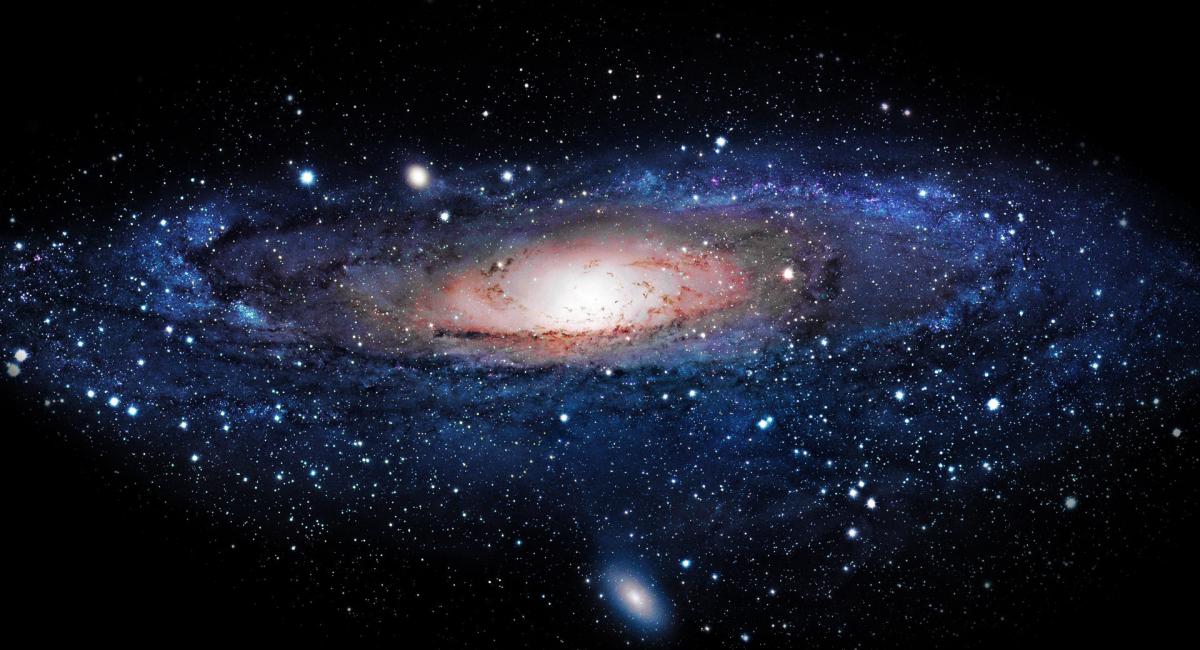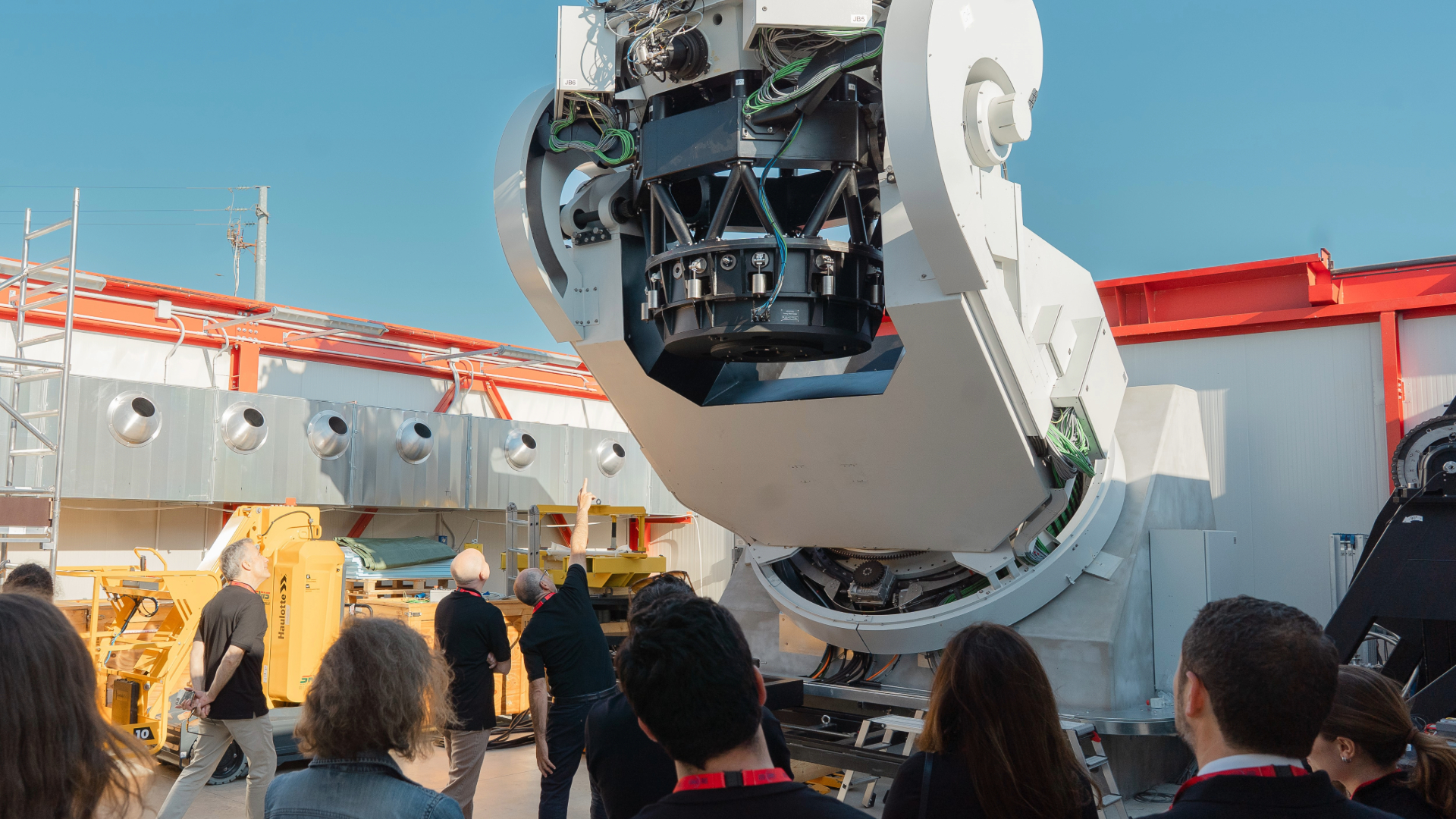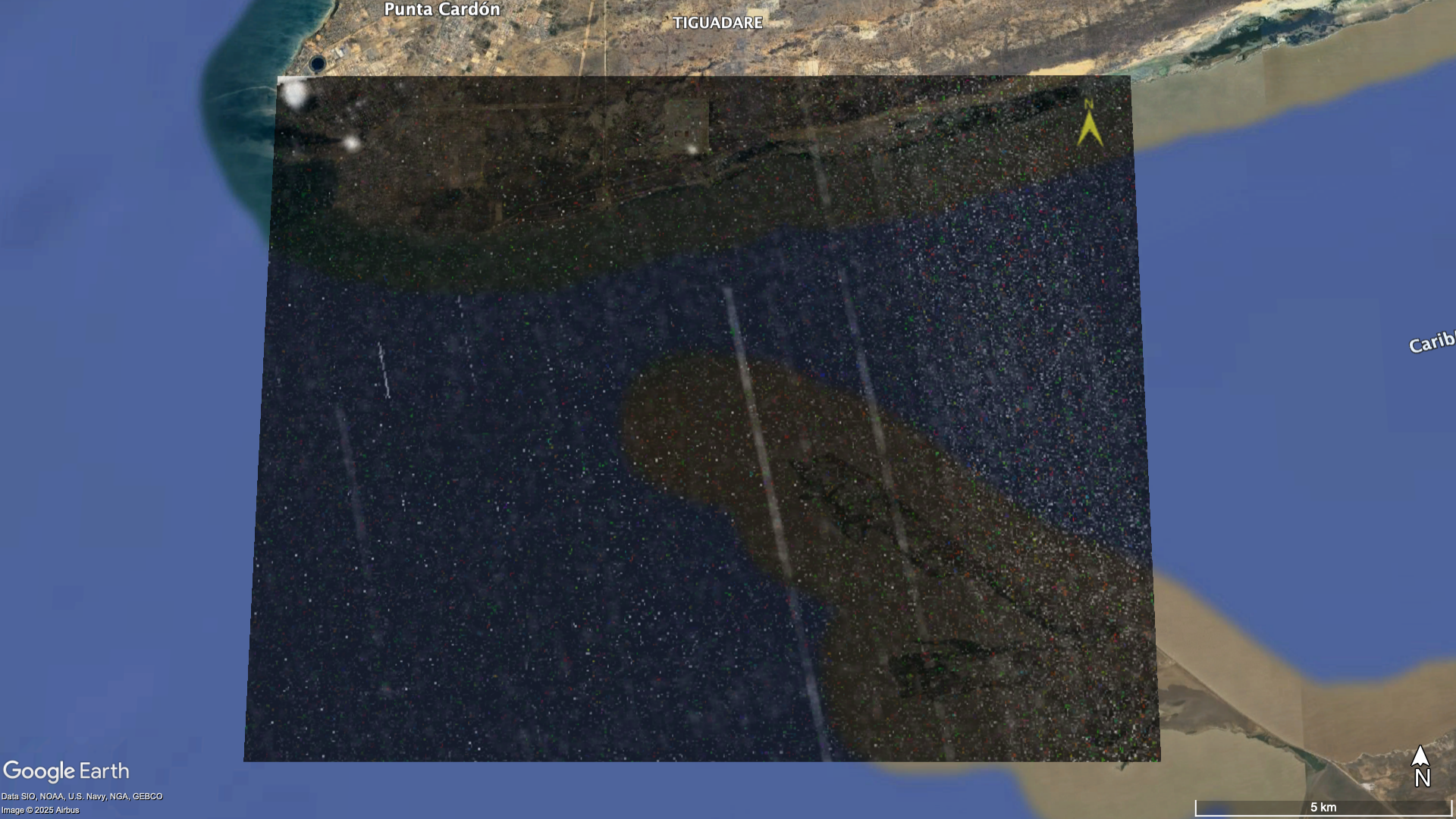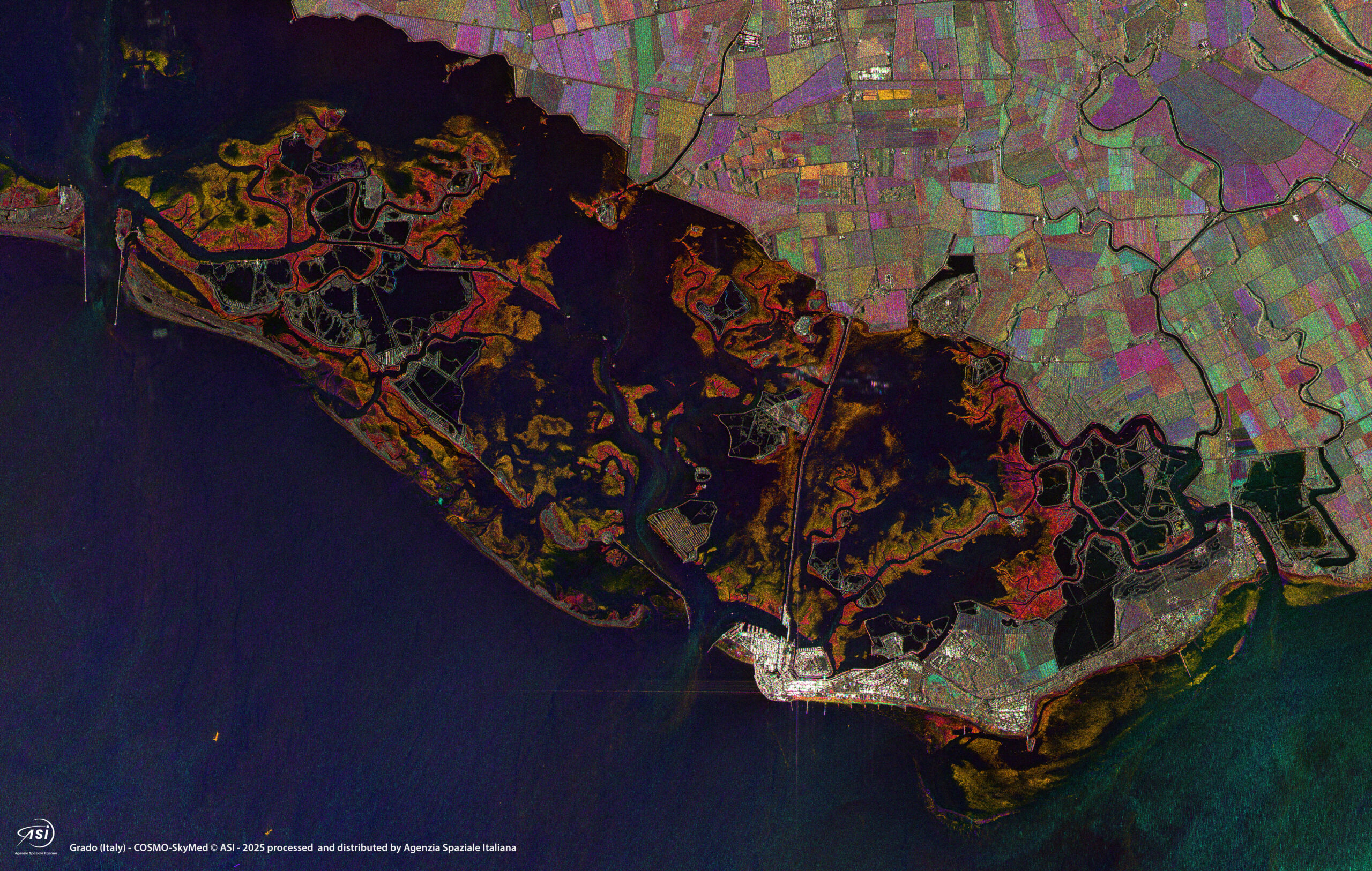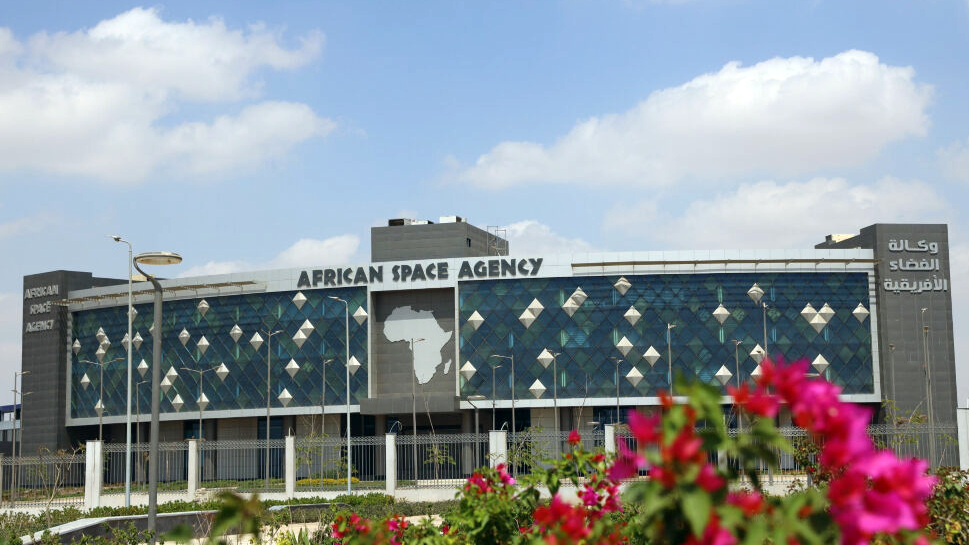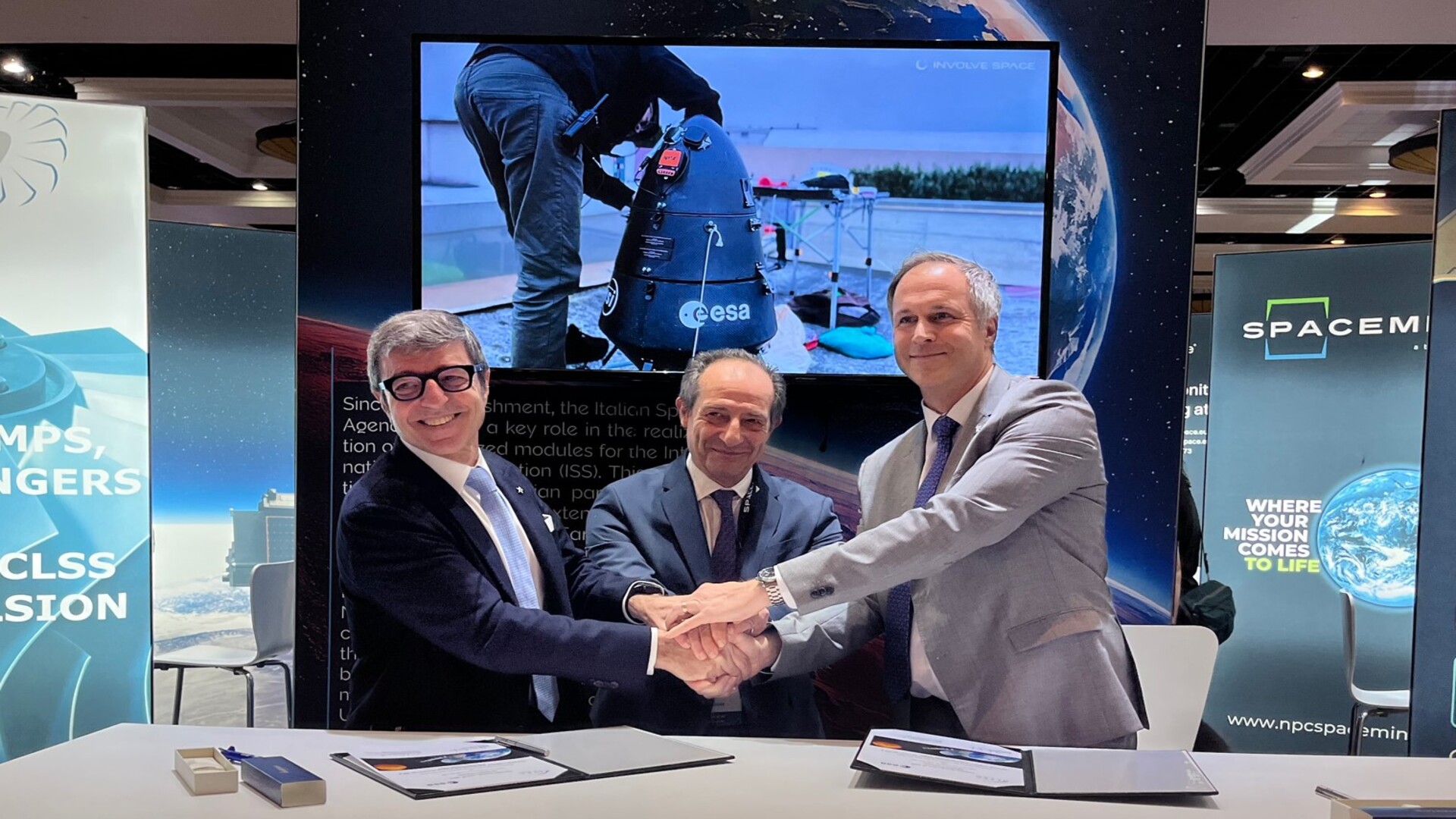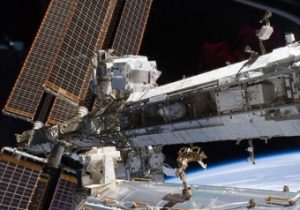
The Alpha Magnetic Spectrometer (AMS) is a particle detector operating as an International Space Station external module, featuring over 3 metres size for an overall weight of 7.5 tons. It’s an ambitious orbiting laboratory for the study of particle physics in space, whose purpose is to precisely measure the composition and abundance of cosmic rays in space to detect signatures of primordial antimatter and dark matter at extreme energies, up to some TeV (“teraelettronvolts”).
Most cosmic rays, about 99% of them, are made up of “ordinary” matter, such as protons and helium nuclei. The AMS-02 instrument was designed to precisely measure the extremely rare component of antimatter in cosmic rays, such as positrons and anti-protons, and discover heavy antimatter particles, such as antihelium nuclei, never observed until today.
In 1998, a prototype of the experiment (AMS-01) flew aboard a Shuttle. The success of the flight showed for the first time the possibility to operate the complex AMS technology in the space environment. After years of further technological developments, the AMS-02 instrument was deployed into orbit with the second to last Shuttle mission, the STS-134, and docked with the ISS, where it has been continuously collecting cosmic rays since May 19th, 2011.
The Italian Space Agency and the National Institute for Nuclear Physics (INFN) have been supporting this experiment since 1995, in the framework of an international cooperation including research institutes and universities in the United States, Europe and Asia. The Italian researchers are responsible for constructing, maintaining and operating the main on-board instruments, and participate in the scientific analysis of data collected by the instrument. The AMS-02’s particle detectors were designed and assembled with the contribution of the INFN researchers from Bologna, Milano, Perugia, Pisa, Roma La Sapienza and Trento, who are also continuing in the space operation of the instruments as of today. ASI contributes to the instrument operation and data analysis activities, with the participation of researchers at the Science and Research Directorate and Space Science Data Center (ASI-SSDC).
The AMS-02 instrument is continuously monitored from the primary Payload Operation Control Center (POCC) at the CERN and from the secondary one in Taiwan. Data analysis is mainly carried out at the Science Operation Centers (SOC), with Italy providing one of the most important nodes thanks to the resources provided by the CNAF (in Bologna, by the INFN) and ASI-SSDC (in Rome, by the ASI) centres. The SSDC also provides the access portal to AMS public data through the Cosmic Ray DataBase (CRDB).
Over 220 billion cosmic rays were identified by AMS-02 in the first 12 years of data taking, and new data is being continuously collected, second after second, to investigate key questions of modern physics. The scientific results obtained by AMS are disclosing unexpected and innovative information, showing the limits in the current understanding of the mechanisms behind the origin, acceleration and propagation of cosmic rays. Based on these results, which are described in detail on the AMS web site, the international scientific community is developing new theories that can describe in an exhaustive and comprehensive framework the new results of the AMS and thereby provide answers to several open questions on the mechanisms of our Universe.

